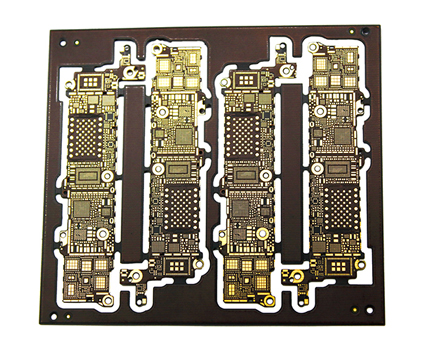PRODUCTS
Crucial Aspects of High Frequency Boards

High-frequency circuit boards, operating at frequencies exceeding several gigahertz, present unique design challenges far exceeding those encountered in lower-frequency applications. The very nature of high-frequency signals—their rapid changes in voltage and current—leads to phenomena that can significantly impact signal integrity and overall circuit performance. Ignoring these crucial aspects can result in malfunctioning devices, unexpected signal attenuation, electromagnetic interference (EMI), and ultimately, product failure. Understanding these challenges and implementing appropriate mitigation techniques is paramount for successful high-frequency board design. This article delves into the essential considerations that engineers must address when working with such circuits.
Signal Integrity
Signal integrity is arguably the most critical aspect of high-frequency board design. At high frequencies, signal propagation becomes significantly more complex. The transmission lines on the PCB no longer behave like simple conductors; instead, they exhibit significant impedance characteristics. Impedance mismatches at connections, vias, and component terminations lead to signal reflections, which can cause signal distortion, ringing, and crosstalk. These unwanted effects can severely degrade signal quality, leading to data errors and system instability.
To maintain signal integrity, careful consideration must be given to the controlled impedance of the transmission lines. This involves precisely controlling the trace width, spacing, and dielectric material to achieve the desired characteristic impedance, often 50 ohms. Proper impedance matching at every connection is critical to minimize reflections. Techniques like using impedance-matched components, series resistors, and termination networks are commonly employed.
Furthermore, the physical layout of the board plays a crucial role in signal integrity. Trace lengths, bends, and the proximity of other traces can all affect signal propagation. Careful planning and simulations are crucial to ensure that signal paths are optimized for minimal signal distortion and crosstalk. Differential signaling, where signals are transmitted as a pair with opposite polarities, can also significantly improve signal integrity by reducing susceptibility to noise and common-mode interference.
Electromagnetic Interference (EMI) and Electromagnetic Compatibility (EMC)
High-frequency circuits radiate electromagnetic energy, and conversely, are susceptible to interference from external sources. This necessitates a rigorous approach to EMI/EMC design. Uncontrolled radiation can cause interference with other circuits and devices, potentially leading to malfunction or failure. Similarly, susceptibility to external interference can introduce noise into the signal paths, degrading performance.
Effective EMI/EMC design involves several key strategies. Proper grounding and shielding are paramount. A well-designed ground plane provides a low-impedance path for return currents, minimizing radiation and reducing susceptibility to noise. Shielding enclosures or conductive coatings can further reduce EMI by preventing radiation from escaping and shielding the circuit from external interference.
Careful layout techniques are also crucial. Placing sensitive components away from potential noise sources and using appropriate filtering techniques can significantly reduce EMI. Component selection is also important; choosing components with low EMI emissions is essential. Finally, rigorous testing and compliance with relevant EMC standards are necessary to ensure the circuit meets regulatory requirements.
Material Selection
The choice of materials used in high-frequency PCBs significantly influences performance. The dielectric material used between the layers of the PCB significantly impacts the characteristic impedance and signal propagation characteristics. High-frequency applications often require low-loss dielectric materials with high dielectric constant stability across a wide range of frequencies to minimize signal attenuation and distortion.
The metallization material, typically copper, also plays a crucial role. The thickness and roughness of the copper traces affect the resistance and inductance of the signal paths. Thicker traces reduce resistance, improving signal integrity at higher frequencies, however, this should be balanced against the manufacturing cost and space requirements.
Selecting appropriate materials requires careful consideration of the frequency of operation, desired impedance, and environmental conditions. The use of specialized materials, such as Rogers or Taconic substrates, which are specifically designed for high-frequency applications, is often necessary to achieve optimal performance.
Thermal Management
High-frequency circuits often generate significant heat, particularly at higher power levels. Excessive heat can damage components, reduce performance, and affect signal integrity. Effective thermal management is essential to ensure reliable operation. This involves careful consideration of the power dissipation of individual components and the overall thermal characteristics of the PCB.
Techniques for thermal management include using heat sinks, thermal vias, and copper pours. Heat sinks provide a large surface area for heat dissipation, while thermal vias help to conduct heat away from components to the ground plane. Copper pours can also be used to distribute heat more evenly across the board.
Simulation and testing are crucial for effective thermal management. Thermal simulations can help predict the temperature distribution on the board under various operating conditions, allowing for optimized design choices. Testing with thermal cameras and other thermal measurement equipment is necessary to validate the design and ensure adequate heat dissipation.
In conclusion, successful high-frequency board design necessitates a holistic approach encompassing signal integrity, EMI/EMC considerations, material selection, and thermal management. A meticulous design process, leveraging simulation tools and rigorous testing, is crucial to overcome the unique challenges presented by high-frequency signals and achieve optimal performance and reliability. Ignoring these crucial aspects can lead to significant problems, emphasizing the need for a deep understanding of these principles.
SUBSCRIBE
INQUIRY

